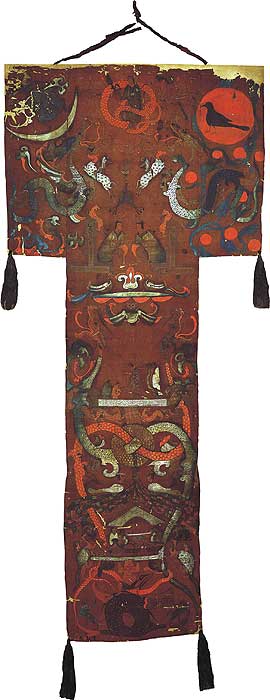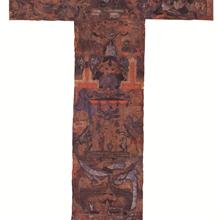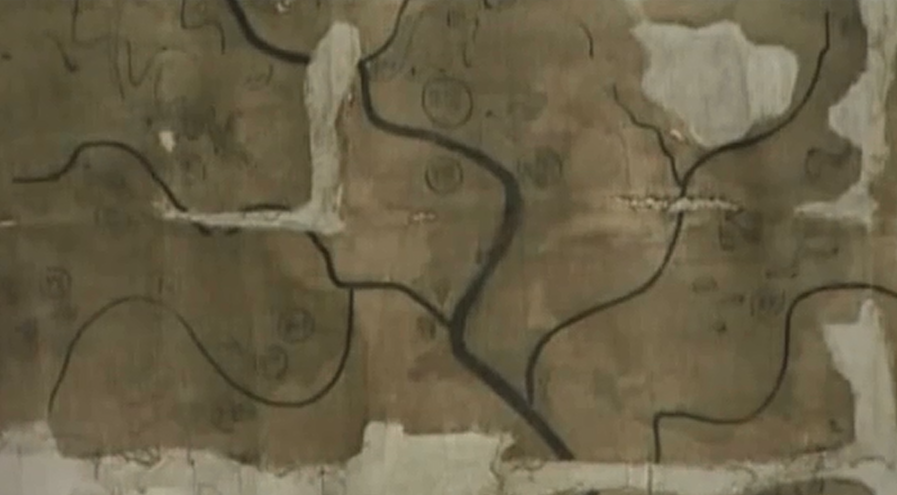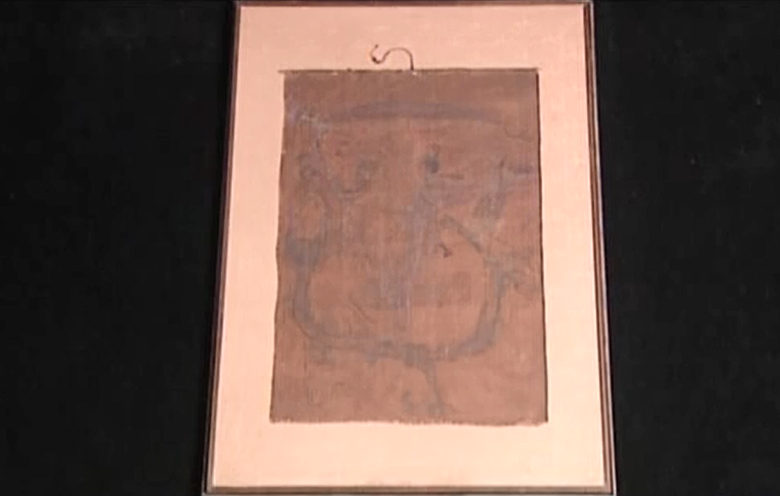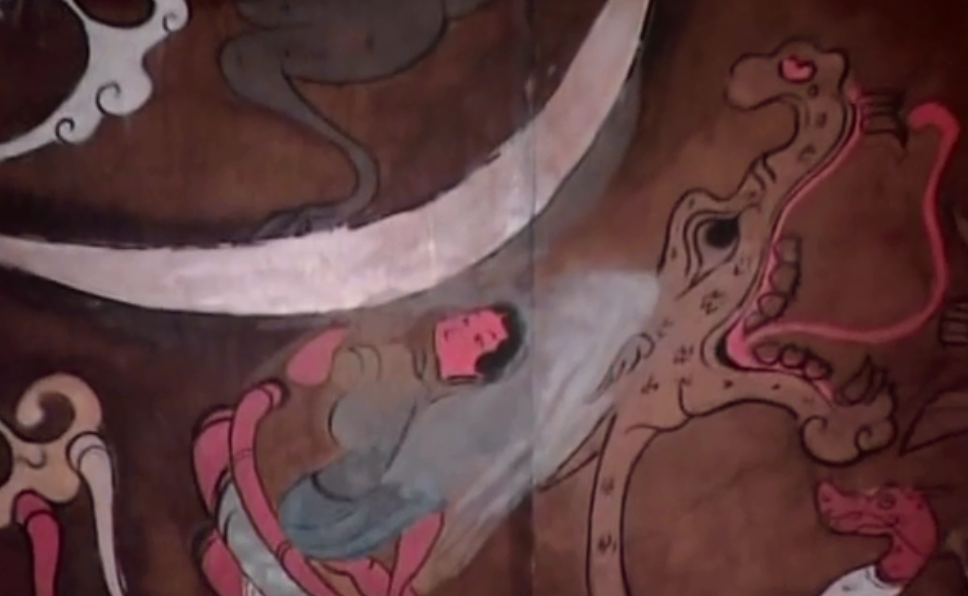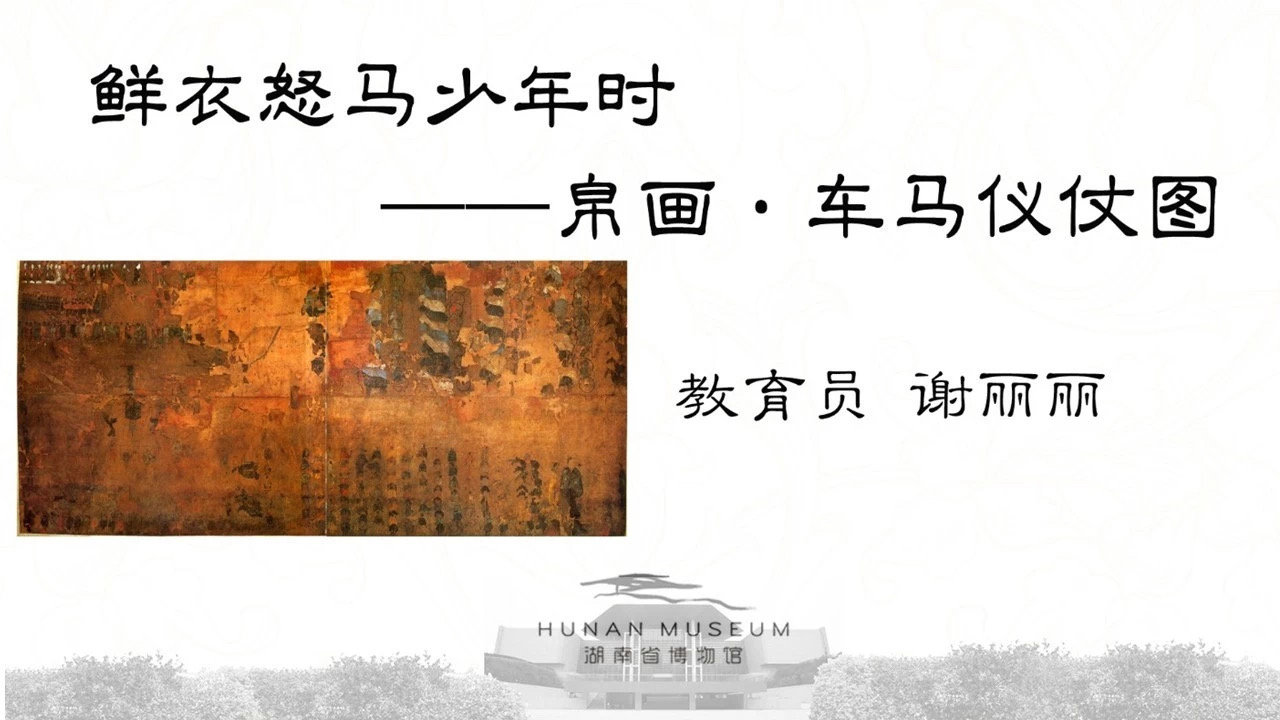Dimensions:Length: 205cm; width at top: 92cm; width at bottom: 47.7cm
Origin: Excavated from Han Tomb No.1 Mawangdui, Changsha City, Hunan Province,1972
This was once a banner carried in the funeral procession and then laid on the innermost coffin. This banner depicts the heavenly world as the ancient people imagined, as well as their romantic view of the quest for eternal life. It is of great artistic value.
With rich colors, vivid characters, ingenious space arrangement and exquisite painting techniques, this art work is crowned as the masterpiece of the painting art in the early Han Dynasty as well as the first-level cultural relic.
This painting on silk reflects the funeral rite of ancient China.
As the painting on silk with the richest contents, this masterpiece can be divided into the heavenly world, the human world and the underworld. Depicted in the heavenly world are a golden crow (sun), a toad (moon), a fire dragon, a winged dragon, Si Hun (the gatekeeper of the heaven), Chang E who flies to the moon, etc.; in the human realm, Xiu Zhui, the tomb’s occupant, is seen flying toward the heavenly world accompanied by three maids, while her family offers sacrifices and prayers for the safe ascent of her soul to heaven; and in the underworld we see a giant lifting the earth. Many myths and legends such as “ten suns in the sky”, “Chang E flying up to the moon”, “great fire dragon”, “flood control of Gong Gong”, “golden crow, the magical bird”, “toad in the moon”, etc., thereby endowing this painting with the title of “index of Chinese ancient myths”.
